Explore Canada’s Immigration Stories with Six Passport Places
For centuries, Canada’s vast landscape has welcomed immigrants from every corner of the globe. Immigrants have and continue to contribute to the country’s identity in multiple ways, bringing unique languages, gastronomies, art, and building practices. From coast, to coast, to coast, Canadian heritage sites serve as long-lasting evidence of determined and resourceful immigrants who left their homelands and ventured into the reaches of North America, interacting with Indigenous communities as they built settlements. Today, these distinctively Canadian sites are a living testament to the legacy of settlers with diverse life experiences that influenced local customs and culture. Each of the following six heritage sites has a special story to tell.
Newman Wine Vaults – St. John’s, Newfoundland and Labrador
The Newman and Company mercantile firm operated in Newfoundland between the mid-1500s and the early 1900s. Although their main business focused on salt fishery, the company also engaged in wine trade. According to provincial lore, a Newman ship transporting wine from Oporto, Portugal to London veered off course in the fall of 1679 while trying to escape from pirates and severe weather. The captain decided to seek shelter in St. John’s, where the ship and its cargo spent the winter. Upon the ship’s return to London the following spring, the company soon realized that the wine’s flavour had improved. This unintended (but beneficial) detour began the practice of aging Newman’s Port in Newfoundland. Portuguese wine thus became an immigrant to Canada! Built in the early nineteenth century, the Newman Wine Vaults are among the oldest structures in St. John’s and the only existing intact historic wine vaults in Newfoundland and Labrador. The vaults saw continued use until 1966. The Heritage Foundation of Newfoundland and Labrador designated the structure a Registered Heritage Structure in 1997. Today, it is a museum dedicated to the history of the Newfoundland liquor trade.

Stone vault with wine barrels at the Newman Wine Vaults in St. John’s.
Aux Trois Couvents – Château Richer, Quebec
Located in the Côte-de-Beaupré regional municipality, Aux Trois Couvents is an interpretation and cultural discovery centre dedicated to the area’s history and cultural identity. One of the first settlements in French North America, Aux Trois Couvents sits on an archeological site where two earlier convents once stood in 1694 and 1830. The first and second convents served as schools for girls, with teacher nuns from the Congregation of Notre Dame de Montreal. Additionally, the third convent of 1907 and a reconstructed classroom from 1912 are preserved in the site. This last iteration allowed co-ed education until 1972, when it ceased to be a school. Aux Trois Couvents seeks to promote the region’s culture, from the seventeenth century to today, through permanent and temporary museum exhibitions, public cultural events, and educational workshops.
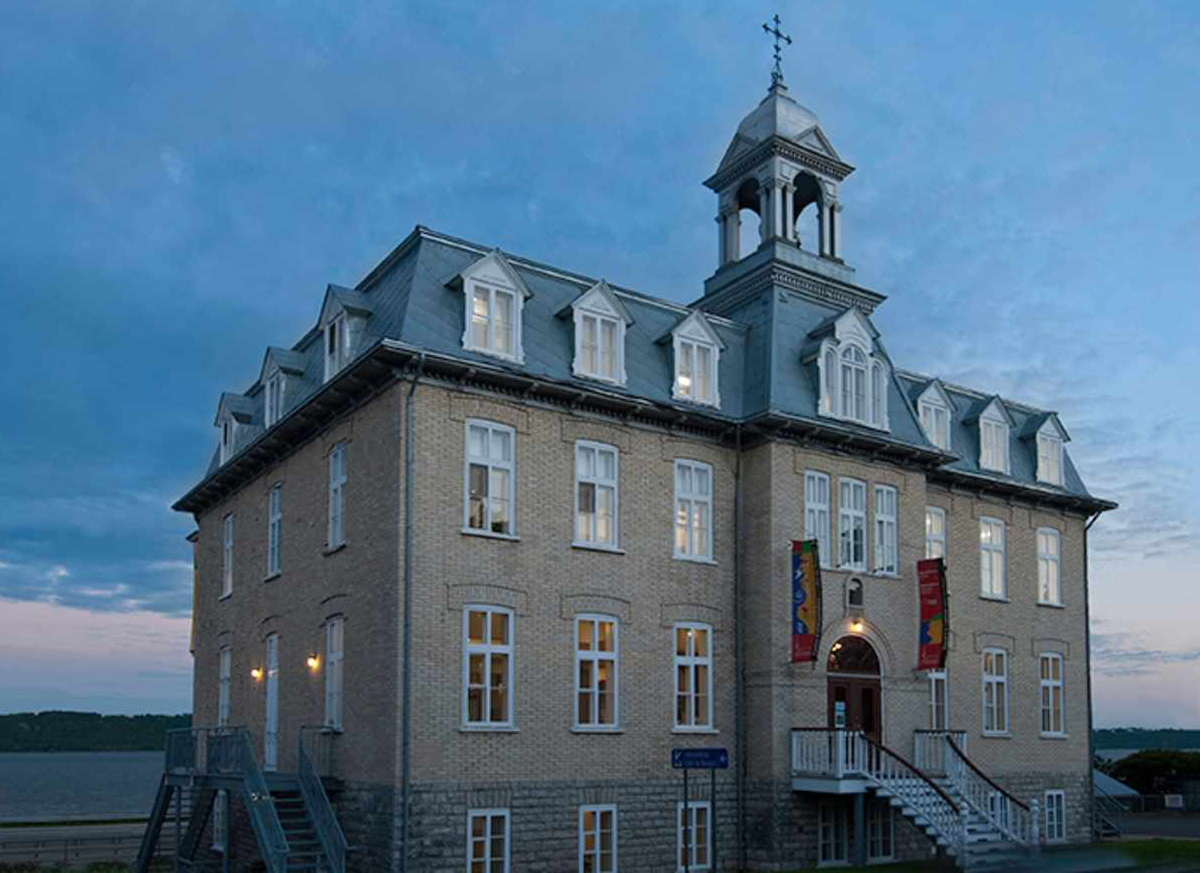
The current structure is the third convent built in 1907 at Château Richer.
Bytown Museum – Ottawa, Ontario
In the heart of Canada’s capital, the city’s oldest stone building offers a venue to learn about Ottawa’s past. Before it was called Ottawa and before it was Canada’s capital, Bytown was a major timber trade outpost. The Bytown Museum tells Ottawa’s history, from its violent lumberjack past to its establishment as the capital of the country by Queen Victoria in 1857 and beyond. The museum sits next to the Rideau Canal, a UNESCO World Heritage Site. The canal marked the division between Upper Town (West) and Lower Town (East). French and Irish settlers laboured in the dangerous construction of the Rideau Canal, eventually settling in swampy Lower Town, where the first French and Irish shanty towns thrived. The wealthy and influential English and Scottish governors lived in Upper Town and built some of the city’s most iconic stone homes. Its location near Parliament Hill and the Fairmont Château Laurier gives the Bytown Museum a privileged position among Ottawa’s most picturesque and important buildings. The museum bears witness to the tenacious and industrious early inhabitants of the city through a collection of more than 7,000 artifacts.
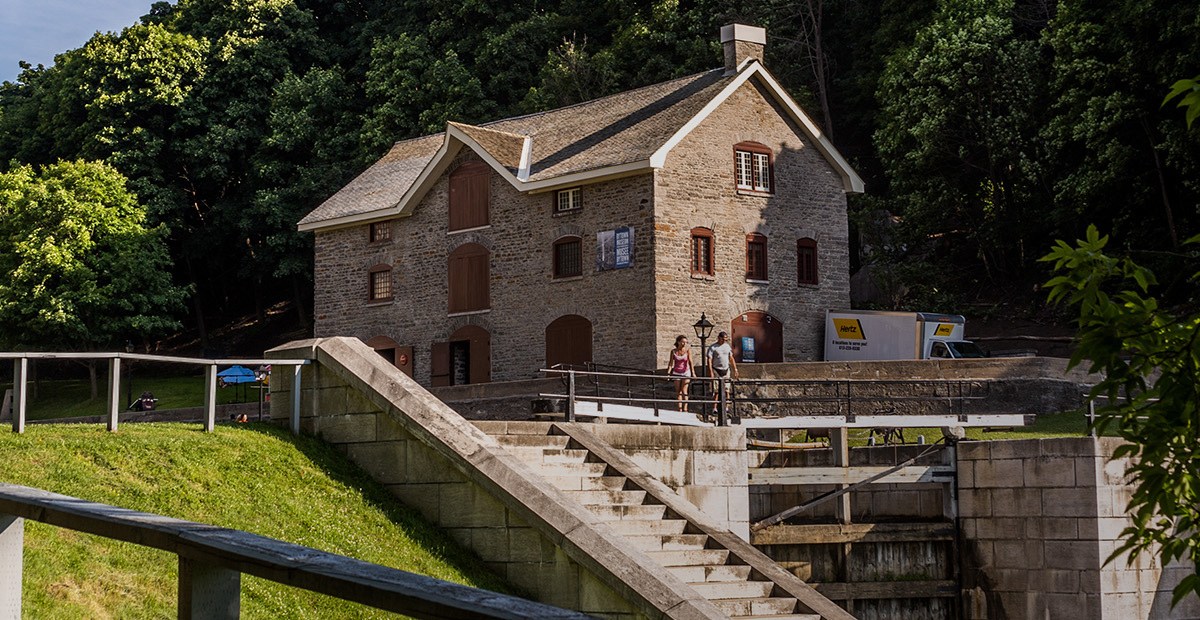
Bytown Museum in Ottawa’s Rideau Canal.
Doukhobor Dugout – Blaine Lake, Saskatchewan
In 1899, Russian Doukhobors (non-Orthodox Christians) settled in Western Canada fleeing their country due to religious persecution. One of the colonies that they founded was located about eight kilometres southeast of the town of Blaine Lake, Saskatchewan. For protection from the harsh winter and a source of fresh water from a nearby spring, these early settlers dug into the North Saskatchewan River ravine, building temporary shelters in the style of houses in the Caucasus. Starting in 1904, the Doukhobors built permanent log houses and established a village. The site is a rare remaining example of early vernacular architecture that took advantage of locally sourced building materials. It is also the only known surviving example of this form of temporary shelter in Canada. Not only does the site demonstrate the resourcefulness and determination of these early Prairie settlers, but it also offers a glimpse into the life of immigrants to the Canadian West during the late nineteenth and early twentieth centuries. The Doukhobor Dugout has been a National Historic Site since 2008 due to its unique combination of built and natural heritage. Today, the Doukhobor descendants are an estimated 30,000 in Canada.
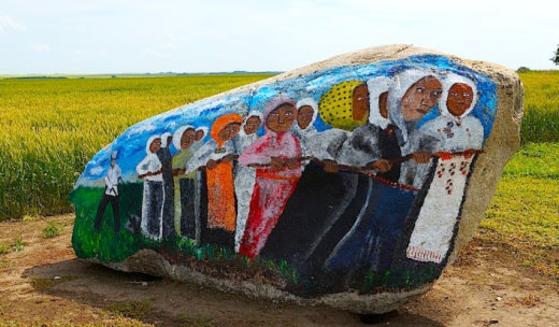
Large painted rock located at the entrance to the Dugout site depicting Doukhobor women.
Craigdarroch Castle – Victoria, British Columbia
With its imposing exterior and luxurious interior, Craigdarroch is a stately home built between 1887 and 1890 by industrialist Robert Dunsmuir and his wife Joan. Dunsmuir was a Scottish immigrant who became the richest man in Western Canada through the coal industry. Built on the summit of the highest hill next to downtown Victoria, the building is an example of a “bonanza castle”—massive houses built for the wealthy entrepreneurs of the industrial age. The castle was designated a National Historic Site in 1992 and is a prominent example of the Scottish Baronial style, which was the leading architectural style in Scotland in the mid-1800s. Inspired by earlier Scottish architecture from the sixteenth and seventeenth centuries, the style illustrates an age when prominent display of wealth was the norm. The building incorporates a distinctive combination of materials, colours, and details from local and imported sources. Some of the then-unprecedented materials used in its construction are sandstone, granite, and wrought iron from British Columbia; marble and slate from Italy and Vermont; terracotta tile from California; and imported wood panelling fabricated in Chicago. Craigdarroch Castle is within walking distance of downtown Victoria and features unique Victorian artifacts, a beautiful collection of stained glass, and vast displays of intricate woodwork.
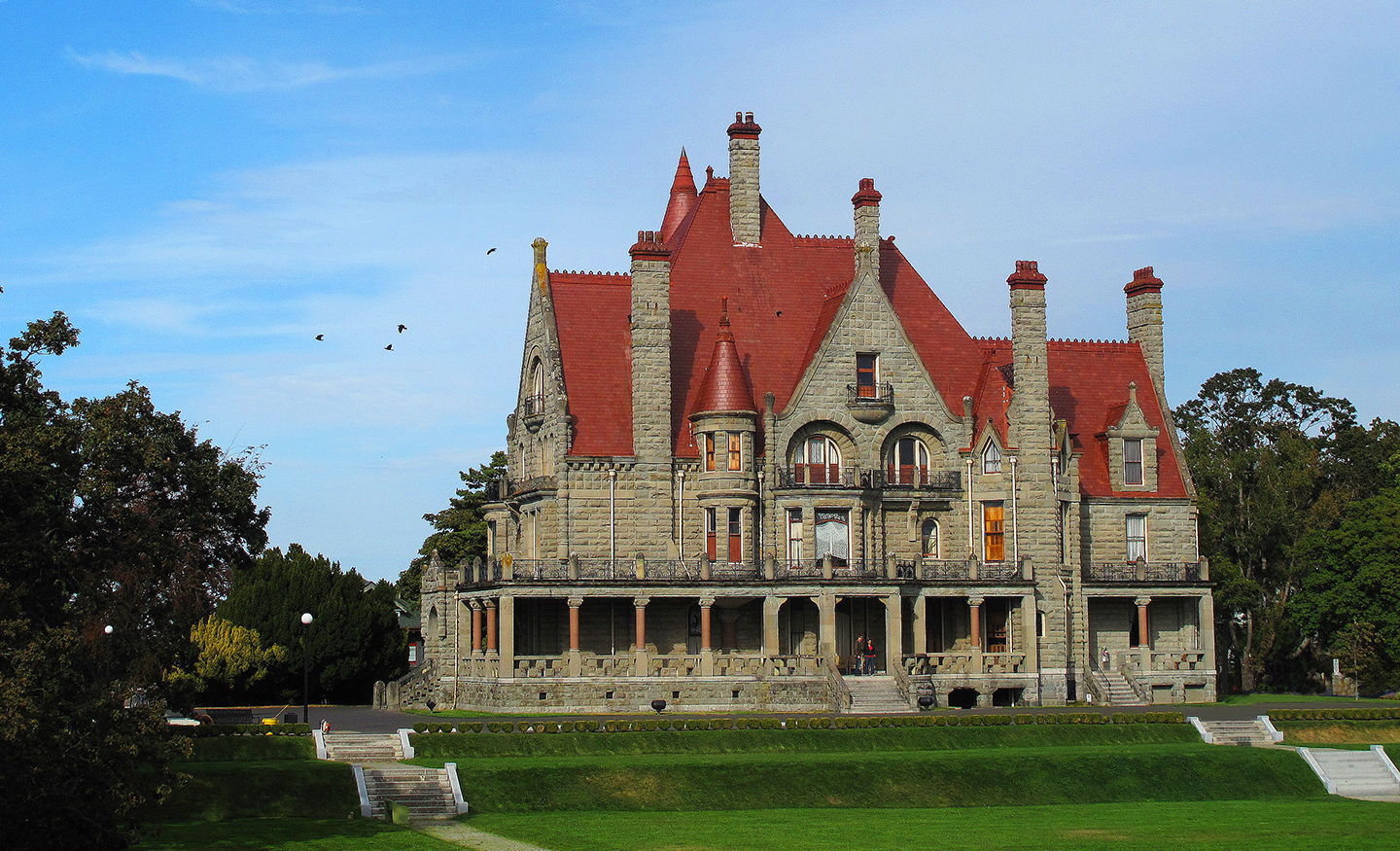
Craigdarroch Castle in Victoria.
Old Log Church – Whitehorse, Yukon
One of the oldest surviving buildings in Whitehorse, the Old Log Church Museum is an Anglican church built in 1900. Old Log Church was built after Yukon’s first Anglican bishop, William Bompas, realized that the new and growing frontier town of White Horse was missing a place of worship. Throughout the years, the log building has functioned as a centre of worship in the city, as well as a social gathering location for the community. Old Log Church became a museum in 1962 and received Historic Site designation in 2014. The museum contains exhibits and interactive displays that tell the stories of early missionaries, explorers, whalers, and Yukon First Nations. It is also an ideal place to learn about the important contributions of prominent Anglican women in the territory, the early contact between Europeans and Yukon’s First Nations, the Klondike Gold Rush that brought thousands of international prospectors, and the Alaska Highway.
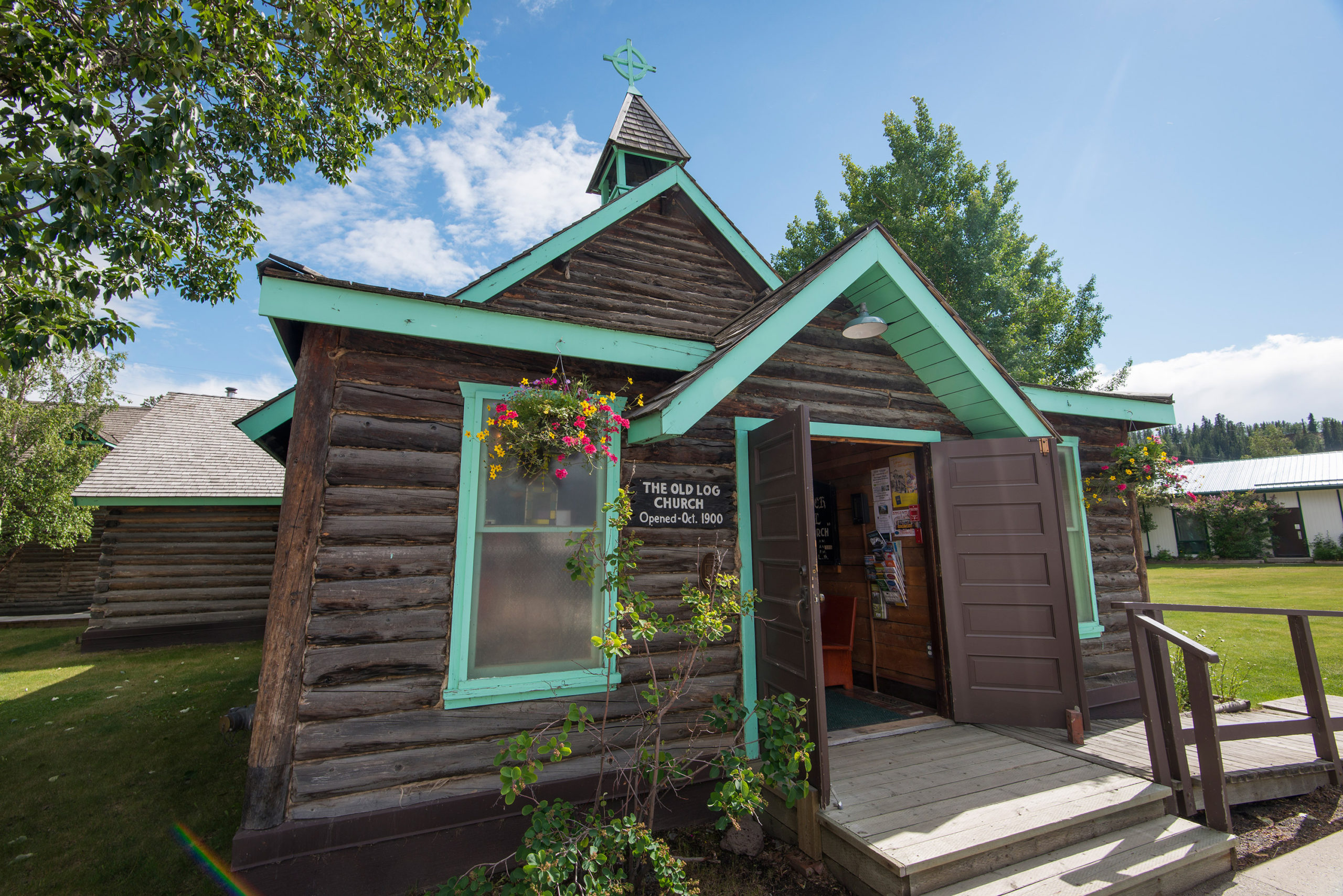
Old Log Church Museum in Whitehorse.
All the historic places above are part of our Passport Places program, a National Trust for Canada membership benefit that provides complimentary access to these beautiful places, as well as 1000+ National Trust Places abroad. Become a member today!

